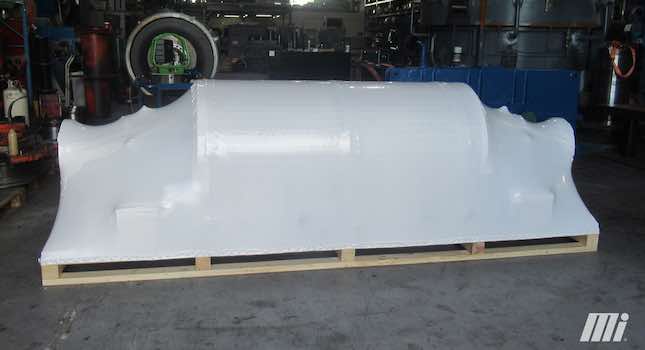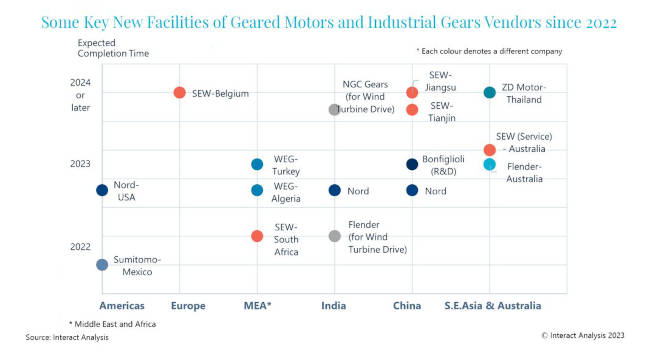Electric motors convert about 2/3 of all electricity used in industry to make things run in our manufacturing plants. We don’t give much thought to replacing them until they stop working. By then, we’re often in a hurry to get the machine back in service and production running again. When that electric motor is replaced, we should look at some very important facts so the replacement...
Electric motors convert about 2/3 of all electricity used in industry to make things run in our manufacturing plants. We don’t give much thought to replacing them until they stop working. By then, we’re often in a hurry to get the machine back in service and production running again.
When that electric motor is replaced, we should look at some very important facts so the replacement motor lasts longer and uses less electricity than the motor it replaces. Questions to answer include:
-
Why did the motor fail?
-
Did contaminants or water get into the grease or winding and cause premature failure?
-
Was the motor operated from a VFD and the motor winding failed because its insulation system wasn’t up to the stresses from the PWM waveform?
-
Did the bearing get overloaded from a heavily belted load?
-
Did the motor simply die of old age?
-
Repair or replace
Perhaps the first decision to make is whether the motor should be rewound or replaced. That depends on the motor that failed, its horsepower, efficiency, hours of use and if it is a special OEM design not readily available. Most companies do not have a repair policy in place.
Many users speak of a 50-50 rule. If the motor is smaller than 50 hp or if the cost to repair is more than 50% of a new motor, it should be replaced and not repaired. An old motor cannot be made more efficient, so any motor that runs continuously should be replaced with a NEMA Premium efficient design. Motors with premium efficiency levels or specialized OEM designs that have failed can be rewound to “ANSI/EASA Standard AR100-2006 Recommended Practice for the Repair of Rotating Electrical Apparatus.” Correctly done, this process ensures that the motor maintains the efficiency level originally supplied by the motor’s manufacturer.
Motors that operate continuously without NEMA Premium efficiency levels should be considered as a candidate for replacement. Many utilities have rebate programs in place to help defray the additional cost of a NEMA Premium motor over one with lower efficiency. Life-cycle cost should be considered, not just first cost. The purchase price of a motor represents only 2% of its life cost; more than 97% of the cost is for electricity used for operation. In a single year, a motor typically uses electricity costing more than 10 times its purchase price.
Make it last longer
A careful analysis of why the motor failed will help with the selection of the replacement motor. If the motor failed from water ingress, the motor enclosure and level of protection can be improved on its replacement. A severe duty or washdown motor design provides water and contaminant protection not present in general-purpose motors. Many process industries such as petroleum, chemical, aggregate and forest products have chosen motors built to comply with “IEEE-841 — Severe Duty Totally Enclosed Fan-Cooled (TEFC) Squirrel Cage Induction Motors — up to and including 370 kW (500 hp).” All-stainless motors are now readily available for food processing application where frequent high-pressure washdown with caustic solutions are used to sanitize equipment.
Newer motors — and particularly NEMA Premium efficient designs — are well suited for use with VFDs and usually have upgraded insulation systems and phase paper. The lower temperature rise in these motors also provides some headroom for the additional heating that could be encountered when using a drive.
When used on heavily belted loads, roller bearings, which are better suited for overhung loads, may be selected. Other motor designs are available with special bearings for vertical pumps that have high axial thrust loads. For specialized applications, these motors will provide a much longer life than is possible with general-purpose motors.
Each facility should establish a policy and specification for any new motors purchased for replacement or on new capital equipment. Many OEMs select a general-purpose motor without the necessary features to provide better environmental protection — and instead of NEMA Premium efficiency.
Plan for failure
Don’t wait until a motor fails on third shift and the maintenance technician grabs whatever is in stock just to get the machine running. Each plant should conduct a survey of its motor population, and tag each one as to what should be done on its failure: Replace it with a NEMA Premium efficiency level motor; replace it with an EPAct level motor; or repair it. This survey should include the spares stock and any old inefficient motors that could be scrapped and replaced with NEMA Premium efficient motors as needed for replacement in the plant.
The survey may also uncover some old motors used continuously with very low efficiencies that could be replaced immediately — even before they fail — to reduce electricity usage. Computer software that can assist with the survey and payback analysis is available from the U.S. Dept. of Energy (MotorMaster+) and most motor manufacturers.
Take care of spares
The following storage requirements are for motors and generators that will not be placed in service for at least six months from the date of shipment. Improper motor storage will result in seriously reduced reliability or failure. An electric motor that is not used regularly while exposed to normally humid atmospheric conditions will likely develop rust in the bearings, or rust particles from surrounding surfaces may contaminate the bearings.
The electrical insulation may absorb an excessive amount of moisture leading to motor winding failure. A wooden crate shell should be constructed to secure the motor during storage. This is similar to an export box, but the sides and top must be secured to the wooden base with lag bolts (not nailed like export boxes) to allow opening and reclosing many times without damaging the shell.
The minimum resistance of motor winding insulation is 5 Meg-Ohms or the calculated minimum, whichever is greater. Minimum resistance is calculated as follows:
R m = kV + 1
where R m is minimum resistance to ground in Meg-Ohms and kV is rated nameplate voltage.
Example: For a 480 Vac-rated motor, R m = 1.48 Meg-Ohms (use 5 M). For a 4,160 Vac-rated motor, R m = 5.16 Meg-Ohms.
Spare motors should be stored in a clean and dry location kept within a temperature range of 50 F to 120 F, and relative humidity not exceeding 60%. The motor’s space heaters (when present) should be connected and energized whenever there is a possibility that the storage ambient conditions will reach dew point. Measure and record the resistance of the winding insulation (dielectric withstand) every 30 days of storage. If the motor insulation decreases below the minimum resistance, contact the motor manufacturer.
Where motors are mounted to machinery, the drains and breathers must be fully operable and at the lowest point of the motor. Vertical motors must be stored in a safe, stable, vertical position. The storage environment must be maintained as stated above.
Motors with anti-friction bearings are to be greased at the time of going into extended storage, with periodic service as follows:
-
Ball and roller bearing (anti-friction) motor shafts are to be rotated manually every three months and greased every six months according to the manufacturer’s instructions
-
Sleeve bearing (oil lube) motors are drained of oil prior to shipment. The oil reservoirs must be refilled to the indicated level with the specified lubricant. The shaft should be rotated monthly by hand at least 10 to 15 revolutions to distribute oil to bearing surfaces.
-
All breather drains must be fully operable while in storage (drain plugs removed). The motors must be stored so that the drain is at the lowest point. All breathers and automatic “T” drains must be operable to allow breathing and draining at points other than through the bearings around the shaft.
Motor management checklist
The following checklist provides a quick reference to motor management best practices:
-
Establish a motor specification
-
Establish a motor repair or replace policy
-
Survey motors in the plant; tag what to do on failure
-
Contact the utility regarding rebate programs
-
Educate purchasing on life cycle costs
-
Maintain proper storage procedures for spares.
-
Companies should know how many motors they have in their facility, their specifications and have a plan for what to do if any of them fail.
Author Information John Malinowski is a senior product manager, ac motors at Baldor Electric Co.
-
-



